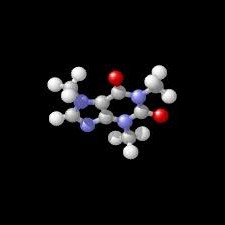Electrophilic addition in organic chemistry
The attachment reactions are characterized by the formation ofone chemical compound from two or more of the starting materials. Consider the mechanism of electrophilic addition is convenient for the example of alkenes - unsaturated acyclic hydrocarbons with one double bond. Apart from these, other hydrocarbons with multiple bonds, including cyclic ones, enter such transformations.
Stages of interaction of initial molecules
Electrophilic joining takes place in severalstages. The electrophile, which has a positive charge, acts as an electron acceptor, and the double bond of the alkene molecule plays the role of an electron donor. Both compounds first form an unstable p-complex. Then the transformation of the π-complex into the ϭ-complex begins. The formation of carbocation at this stage and its stability determine the rate of interaction as a whole. After this, carbocation rapidly interacts with a partially negatively charged nucleophile, and the final product of transformation is formed.

The effect of substituents on the reaction rate
Delocalization of the charge (ϭ +) in the carbocation depends onfrom the structure of the original molecule. The positive inductive effect that the alkyl group exhibits leads to a lower charge of the neighboring carbon atom. As a result, in the molecule with an electron-donating substituent, the relative stability of the cation, the electronic density of the π-bond, and the reactivity of the molecule as a whole increase. The effect of electron acceptors on reactivity will be opposite.
The mechanism of halogen addition
Let us analyze in more detail the mechanism of the reaction of electrophilic addition by the example of the interaction of alkene and halogen.
- The halogen molecule approaches a double bondbetween carbon atoms and is polarized. Due to a partially positive charge at one end of the molecule, the halogen pulls π-bond electrons. This is how the unstable π-complex is formed.
- In the next step, the electrophilic particle combines with two carbon atoms to form a cycle. A cyclic "onium" ion appears.
- The remaining charged halogen particle(a positively charged nucleophile) interacts with an onium ion and is connected on the opposite side of the previous halogen particle. The final product, trans-1,2-dihalogenalkane, appears. Similarly, the addition of halogen to cycloalkene.
The mechanism of addition of hydrohalic acids

Electrophilic addition reactionsHydrogen halides and sulfuric acid proceed differently. In an acidic medium, the reagent dissociates into a cation and an anion. A positively charged ion (electrophile) attacks the π-bond, combines with one of the carbon atoms. A carbocation forms in which the neighboring carbon atom is charged positively. Further, the carbocation reacts with the anion to form the final reaction product.
The direction of the reaction between asymmetric reagents and the Markovnikov rule

Electrophilic attachment between twoasymmetric molecules proceed regioselectively. This means that only one of the two possible isomers is formed. Regioselectivity describes the Markovnikov rule, according to which hydrogen is attached to a carbon atom connected to a large number of other hydrogen atoms (to a more hydrogenated one).
To understand the essence of this rule, we need to rememberthat the reaction rate depends on the stability of the intermediate carbocation. The influence of electron-donor and acceptor substituents was discussed above. Thus, electrophilic addition of hydrobromic acid to propene will result in the formation of 2-bromopropane. An intermediate cation with a positive charge on a central carbon atom is more stable than a carbocation with a positive charge at the extreme atom. As a result, the bromine atom interacts with the second carbon atom.

Effect of electron-withdrawing substituent on the course of interaction
If the source molecule containsan electron-withdrawing substituent having a negative inductive and / or mesomeric effect, the electrophilic attachment goes against the above-described rule. Examples of such substituents are CF3, COOH, CN. In this case, the great distance of the positive charge from the electron-withdrawing group makes the primary carbocation more stable. As a result, hydrogen combines with a less hydrogenated carbon atom.
The universal variant of the rule will look like this: when an asymmetric alkene and an asymmetric reagent interact, the reaction proceeds along the path of formation of the most stable carbocation.







